The department colloquium is a series of talks given by mathematicians and statisticians aimed at an undergraduate audience. Everyone is welcome to attend!
Fall 2025 Schedule
| Date | Speaker | Affiliation |
|---|---|---|
| Wednesday, September 24th | Ron Buckmire | Marist University |
| Wednesday, October 8th | Adam Lowrance | Vassar College |
| Tuesday, October 14th | Patrick Gambill | Washington State University |
| Friday, October 31st | Christina Athanasouli | Williams College |
| Friday, November 7th | Robyn Brooks | University of Utah |
| Monday, November 10th | Richard Schwartz | Brown University |
| Thursday, November 13th | Sébastien Labbé | CRM-CNRS |
| Monday, November 17th | Peter Oberly | University of Rochester |
| Friday, December 5th | Tara Holm | Cornell University |

Dance of the Astonished Topologist
…or How I Left Squares and Hexes for Math
Tara Holm
Cornell University
Friday, December 5th
4pm Rocky 312
Topology is often called “rubber sheet geometry” and is described as “floppy” while geometry is more “rigid”. Symplectic geometry, the natural geometry of classical mechanics, is floppier than Riemannian geometry but more rigid than topology. I will give a friendly introduction to some geometric and algebraic techniques in topology, proving along the way that a topologist can turn her trousers inside out without taking them off. I will then give an overview of the floppy/rigid spectrum, motivated by many pictures and examples. I will conclude with a description how covering spaces have been useful in my own work in symplectic geometry, and how they can make square dancing more challenging.

Period Three Implies Chaos: an Invitation to Discrete Time Dynamical Systems
Peter Oberly
University of Rochester
Monday, November 17th
4pm Rocky 312
What is chaos, really? We’ll explore one answer to this question through the lens of discrete time dynamical systems on an interval. This investigation will lead us to a celebrated theorem of Sharkovskii: that systems which admit periodic cycles of length three in fact have periodic cycles of every length. No prior knowledge of dynamical systems is assumed; this talk should be accessible to anyone who has taken a course in calculus.

Aperiodic Wang Tiles Associated with Metallic Means
Sébastien Labbé
CNRS, IRL CRM-CNRS à Montréal & LaBRI, Université de Bordeaux
Thursday, November 13th
4pm Rocky 200
In the aperiodic tilings proposed by Penrose in 1974, the ratio of tile frequencies is equal to the golden ratio. Several aperiodic tilings discovered since then, such as Ammann’s tilings (1980s) or Jeandel-Rao’s tilings (2015), are also associated with the golden ratio. This is also the case for the aperiodic monotile called “hat” discovered in 2023, whose ratio of frequencies of the two orientations of the monotile is well-defined and is equal to the 4th power of the golden ratio. In this presentation, we will explain how one-dimensional symbolic dynamics can be used to understand and obtain new results in the theory of aperiodic tilings.

The Most Efficient Origami Torus
Richard Schwartz
Brown University
Monday, November 10th
4pm Rocky 312
Surprisingly, it is possible to fit together a finite number of triangles in space and make an embedded topological torus in such a way that around each vertex the total angle is 2 Pi. In other terms, what this means is that you can make a torus out of origami. These origami tori have been known since 1960 but until recently nobody knew the minimum number of vertices (or, equivalently, the minimum number of triangles) needed to make one. This summer I discovered that you need 8 vertices (and 16 triangles) to make one, and that you can in fact make one with 8 vertices. In this talk I’ll explain how I discovered the 8-vertex origami torus and discuss some of its remarkable properties.
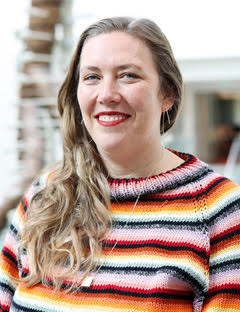
Persistent Homology and Discrete Morse Theory: Two Best Friends
Robyn Brooks
University of Utah
Friday, November 7th
4pm Rocky 312
Persistent Homology is a tool of Computation Topology which is used to determine the topological features of a space from a sample of data points. In this talk, I will introduce the persistence pipeline, as well as some basic tools from Discrete Morse Theory which can be used to better understand the persistence module of a filtration. In particular, the addition of a discrete gradient vector field consistent with a filtration allows one to exploit the information contained in the critical cells of that vector field as a means of enhancing geometrical understanding of multi-parameter persistence. I will introduce results from work with students in my undergraduate research lab on Topologcial Data Analysis on our work using Discrete Morse Theory to understand the fibered barcode of a bi-persistence module. I will also present results of other the projects of my undergraduate research lab. Finally, through out the talk, I will speak a bit about my own path in mathematics, how I found community in other mathematicians, and talk a bit about the work that I do in the mathematics community outside of my math research.

Mathematical Modeling of Human Sleep Across Development
Christina Athanasouli
Williams College
Friday, October 31st
4pm Rocky 312
Human sleep-wake patterns change substantially over the course of development: young children often nap during the day, whereas adults typically consolidate sleep into a single nighttime period. These patterns are governed by two primary biological processes–the circadian rhythm, which sets our internal 24-hour clock, and the homeostatic sleep drive, which reflects the accumulation of sleep need. In this talk, I will introduce the physiological underpinnings of human sleep and present mathematical models that capture its regulation. Using analytical and computational tools, we examine how changes in circadian and homeostatic parameters shape sleep architecture, revealing interesting transitions in sleep behavior under varying conditions and across different stages of life.

DamageEst: Accurate Estimation of Damage for Repair Using Additive Manufacturing
Patrick Gambill
Washing State University
Mitsubishi Electric Research Laboratories
Tuesday, October 14th
4pm Rocky 200
Repairing damages in high-value parts using additive processes can be more efficient than using state-of-the-art high-skilled manual processes. We describe DamageEst, an efficient computational geometry framework for detecting and estimating the damage volume (DV) and the inner damage surface (IDS) using point cloud data (PCD) of damaged parts and their original 3D models. DamageEst identifies points in PCD on the IDS to reconstruct the IDS. It then encloses the reconstructed IDS and original part in a slightly scaled background mesh, from which the DV is reconstructed using Boolean operations. DamageEst also enables targeted overestimation of damage for repair using additive manufacturing followed by milling to guarantee high surface quality. Prior methods scale exponentially in both time and memory, while DamageEst scales in polynomial time and memory. DamageEst enables precise identification and representation of damages with minimal human intervention. This is joint work with William Yerazunis, Devesh Jha, and Arvind Raghunathan from Mitsubishi Electric Research Laboratories and Bala Krishnamoorthy from Washington State University.

Some of My Favorite Knot Invariants
Adam Lowrance
Vassar College
Wednesday, October 8th
4pm Rocky 203
A knot is formed by fusing the ends of a tangled piece of string together so that it makes a continuous loop. Two knots are the equivalent if one can be stretched or deformed to exactly match the other. A knot invariant is a quantity assigned to a knot such that equivalent knots are assigned the same quantity. A knot is alternating if it has a projection such that the crossings alternate between over and under as one travels around the knot. In this talk, we define and discuss some knot invariants that measure how far a knot is away from being alternating.

Different Differences: An Introduction to Nonstandard Finite Difference Schemes
Ron Buckmire
Marist University
Wednesday, September 24th
4pm Rocky 203
From Calculus we know that a derivative of a function can be approximated using a
difference quotient. There are different forms of the difference quotient, such as the
forward difference (most common), backward difference (less common) and centered
difference (more accurate). In this talk I will discuss several different differences,
specifically nonstandard finite differences (NFSD) that can be used to approximate the
derivatives that appear in differential equations as a solution technique. Many NSFD
schemes have been created, discovered, and promoted by Dr. Ronald E. Mickens, an
African American Emeritus Professor of Physics at Clark Atlanta University, who has
written more than 300 research articles and a dozen books. I’ll provide examples of
NSFD schemes that can be used to solve a wide variety of problems drawn from
several different areas, such as first-semester Calculus, elementary ordinary differential
equations, and more advanced differential equations.
Spring 2025 Schedule
| Date | Speaker | Affiliation |
|---|---|---|
| Friday, January 31st | Austin MBaye | Northeastern University |
| Friday, February 21st | Jamie Juul | Colorado State University |
| Tuesday, February 25th | Andrew Schultz | Wellesley College |
| Monday, March 24th | Tim Goldberg | Lenoir–Rhyne University |
| Thursday, April 3rd | Katie Ellman-Aspnes | Notre Dame University |
| Thursday, April 17th | Jinyoung Park | Courant Institute at NYU |
| Wednesday, April 23rd | Becca Thomases | Smith College |

A Period-Doubling Route to Chaos in Viscoelastic Fluids
Becca Thomases
Smith College
Wednesday, April 23rd
4pm Rocky 300
Chaos in dynamical systems can be described as sensitive dependence on initial conditions where a small change in one state of a system can result in large differences in a later state, the so-called butterfly effect. In dynamical systems chaos can often be reached by a sequence of period-doubling bifurcations that occur when a slight change in parameters causes a new periodic trajectory to emerge from an existing trajectory, with double the original period. Period-doubling cascades are one possible route to turbulence in fluid dynamics. Here I will describe a period-doubling cascade from steady traveling wave solutions to chaotic flows in a model system of a viscoelastic fluid without inertia.

Threshold Phenomena for
Random Discrete Structures
Jinyoung Park
Courant Institute
NYU
Thursday, April 17th
4pm Rocky 300
In this expository talk, we will walk through some basics of random graph theory, aiming to understand a high-level motivation for the Kahn-Kalai Conjecture (now the Park-Pham Theorem), which has been a central conjecture in the area of probabilistic combinatorics. For a finite set X, a family F of subsets of X is said to be increasing if any set A that contains B in F is also in F. The p-biased product measure of F increases as p increases from 0 to 1, and often exhibits a drastic change around a specific value, which is called a “threshold.” Thresholds of increasing families have been of great historical interest and a central focus of the study of random discrete structures, with estimation of thresholds for specific properties the subject of some of the most challenging work in the area. In 2006, Jeff Kahn and Gil Kalai conjectured that a natural (and often easy to calculate) lower bound q(F) (which we refer to as the “expectation-threshold”) for the threshold is in fact never far from its actual value. A positive answer to this conjecture enables one to narrow down the location of thresholds for any increasing properties in a tiny window.
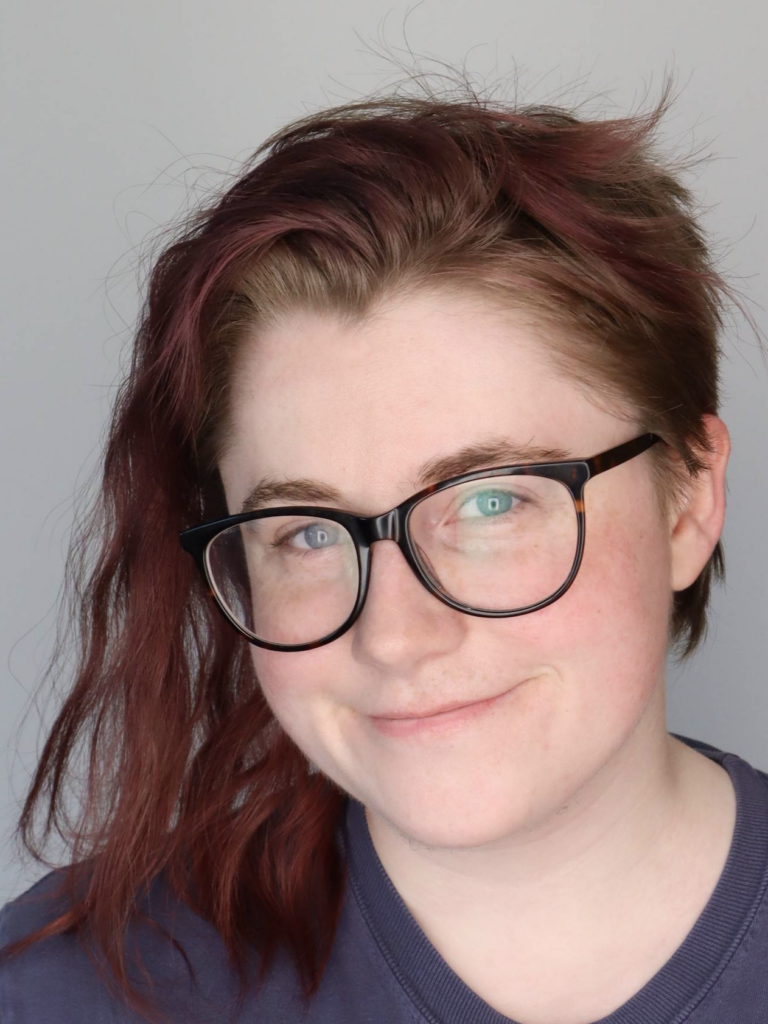
Classification Theory and the
Map of the Universe
Katie Ellman-Aspnes
Notre Dame University
Thursday, April 3rd
4pm Rocky 300
Model theory enables us to analyze and compare the complexity of various mathematical objects that are structurally very different, such as a graph with a group or a field with a topological space. In this talk we’ll discuss what it means for a mathematical object to be classifiable and some indicators of complexity that show when an object is not classifiable. We’ll also take a look at the model-theoretic “map of the universe,” which is a means of visually organizing various types of mathematical objects according to model-theoretic degrees of complexity.

Characterizing Quad-Free Sets in the Card Game EvenQuads:
An Exploration of Caps in AG(n,2)
Timothy E. Goldberg
Lenoir–Rhyne University
Monday, March 24th
4pm Rocky 312
EvenQuads is a SET-like card game published by the AWM whose goal is to find “quads”, which are sets of four cards satisfying a particular pattern. The cards can be viewed as points in the finite affine geometry AG(6,2), and a quad in the card game corresponds to a plane in AG(6,2). We are most interested in quad-free collections of cards. We will describe an analog of the “cap set problem” for EvenQuads, and discuss known results. In particular, we will address the question of how many cards you must lay down to guarantee a quad.

The Math Behind Democratic Systems
Andrew Schultz
Wellesley College
Tuesday, February 25th
4pm Rocky 310
One of the founding principles in a democracy is that the government makes its decisions based on the will of the people. This is a fine goal to have in principle, but how is it realized in practice? In this talk we’ll examine some of the logistical choices that get made in the process of running the democratic process here in the United States. Using some fairly basic principles in mathematics, we will see that forming a representative democratic government is (provably!) hard, but we’ll also see how math might point us towards improvement.

Symmetries, Roots, and Trees
Jamie Juul
Colorado State University
Friday, February 21st
4pm Rocky 312
The symmetries of a shape are the ways we can reorient the shape so that it keeps its structure. In this talk we consider the symmetries of the roots of a polynomial: the ways we can swap the roots so their structure (i.e. their algebraic relationships) are preserved. This idea lies at the heart of Galois theory, one of the central concepts in modern abstract algebra. After exploring some basic ideas used to understand symmetries of roots of polynomials, we will take a look at symmetries of roots of iterated polynomials and how we can use tree graphs to help us understand these symmetries.

Quantifying Repetitive Motor Patterns in Autism with Sliding Windows and n-Persistent Scoring (SWnPers)
Austin MBaye
Northeastern University
Friday, January 31st
4pm Rocky 312
Stereotypical motor movements (SMMs) are repetitive behaviors commonly observed in individuals with autism spectrum disorder (ASD). Traditional methods for analyzing these behaviors rely on subjective reports or manual video review, which are often inconsistent and labor-intensive. To overcome these limitations, we present a novel framework that integrates video-based pose estimation with Topological Data Analysis (TDA). Using Sliding Windows and n-Persistent Scoring (SWnPers), our method captures joint movements from video data, uncovering subtle, recurring structures that distinguish repetitive from non-repetitive behaviors. Tested on real-world datasets, this interpretable, accurate, and non-invasive approach offers new possibilities for early ASD detection and a deeper understanding of SMMs.
Fall 2024 Schedule
| Date | Speaker | Affiliation |
|---|---|---|
| Friday, September 20th | Ophelia Adams | University of Rochester |
| Friday, October 4th | Jeff Goldsmith | Columbia University |
| Tuesday, October 22nd | Dean Spyropoulos | Michigan State University |
| Monday, October 28th | Zheng Bian | Clarkson University |
| Thursday, November 14th | Joshua Snoke | RAND Corporation |
| Friday, November 22nd | Ivan Cheltsov | University of Edinburgh |
| Wednesday, December 4th | Nikolas Schonskeck | Rockefeller University |

An Introduction to Applied Algebraic Topology
Nikolas Schonsheck
The Rockefeller University
Wednesday, December 4th
4pm Rocky 312
Over the last 10-20 years, applications of topology to fields such as neuroscience, genomics, and data analysis have exploded in number. The most recent conference on applied topology in Oxford drew hundreds of participants from all over the world. In this talk, we will provide an introduction to how algebraic topology can be used to find the “shape of data” and how that shape can encode information that would otherwise be inaccessible. We will begin by introducing some of the main tools from algebraic topology used in modern topological data analysis such as simplicial and persistent homology. Time permitting, we will then apply these tools in the context of neuroscience and explore how neural circuits learn to represent topologically complex coding patterns. This talk is aimed at a broad undergraduate audience. No familiarity with topology will be assumed.

Which Cubics Admit Rational Parametrization?
Ivan Cheltsov
University of Edinburgh
Friday, November 22nd
4pm Rocky 312
Every day we deal with geometric objects defined by algebraic equations (circles, parabolas, hyperbolas, splines, spheres, hyperboloids, etc). In many applications, we have to parametrize them using the simplest possible functions: rational functions in several variables. To find such a parametrization may be tricky. This is a classical problem; Pythagoras found a rational parametrization of the circle when he found Pythagorean triples, and the same approach gives explicit rational parametrizations of the sphere or any geometric object given by one quadratic equation. In more complicated cases, the problem can be difficult. Quite often rational parametrizations do not exist. For example, most planar cubic curves cannot be parametrized by rational functions (the proof for the Fermat cubic curves follows from Euler’s proof of Fermat’s Last Theorem for exponent 3). In this talk, I will focus on the existence of rational parametrizations of cubics–geometric objects defined by one equation of degree 3.

Fake Data? Generating Synthetic Data for Privacy-Preserving Data Sharing
Joshua Snoke
RAND Corporation
Thursday, November 14th
3:30pm Rocky 300
Researchers and agencies who collect data often want to share the data for purposes of education, training, or expanding research opportunities. The creation of synthetic data, i.e., simulated data generated to contain similar properties to the confidential data, has become a popular approach for sharing versions of the data while preserving privacy. This talk will cover some of the common methods used for generating and evaluating synthetic data, highlighting the benefits and drawbacks. I will then present recent work on the development of synthetic data methods for survey data, which contain additional complexities such as multiple levels of observations, non-proportional sampling, and survey weights. These methods are used in an application to synthesize the Longitudinal Aging Study in India (LASI), a panel study of key economic, social, and health characteristics of India’s older population.

Mean-field and Fluctuations for Hub Dynamics in Heterogeneous Random Networks
Zheng Bian
Clarkson Center for
Complex Systems Science
Monday, October 28th
4pm Rocky 310
As a leaf falls slowly but almost surely, numerous microscopic collisions with air particles compose their erratic movements into the macroscopic symphony of the wind. This is a vivid example of the mean-field—an effective description of high-dimensional dynamics by a low-dimensional system. In a large network, where units evolve and interact with their neighbors, we describe the behavior of a hub—a very well connected unit, in terms of the mean-field, subject to statistically controlled fluctuations. More detailed insights will be presented in this talk, including a scaling relation between network size and frequency of large fluctuations, the network size induced desynchronization, and the Gaussian statistics of the fluctuations. Time permitting, we will also state the Theorems behind these phenomena and give hints to the proofs.
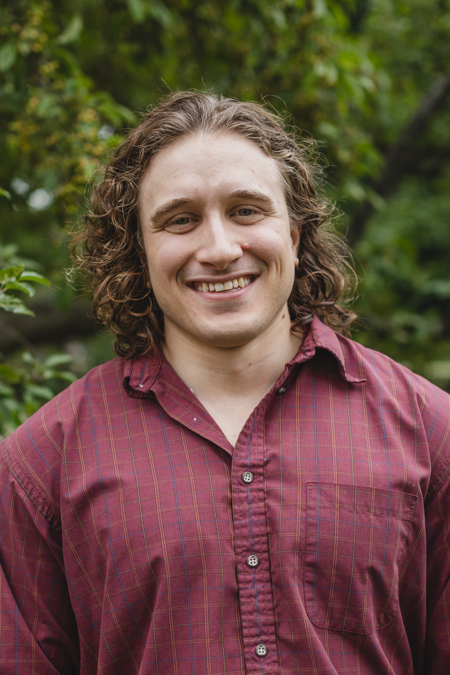
Studying 3-manifolds via Knots
Dean Spyropoulos
Michigan State University
Tuesday October 22nd
4pm Rocky 307
A 3-manifold is a topological space which, at any given point, looks a lot like the space in which we live. One reason to care about knots is that we can produce (many!) 3-manifolds from them. After getting comfortable with this correspondence, I’ll describe a situation in which we can promote a knot invariant to a 3-manifold invariant. The key ingredients are particular objects which unite representation theory and low-dimensional topology, called Jones-Wenzl projectors.

Wearable Devices in
Public Health Research
Jeff Goldsmith
Columbia University
Friday October 4th
4pm Rocky 310
In the last ten years, technological advances have made many activity- and physiology-monitoring wearable devices available for use in both clinical trials and large-scale epidemiological studies. This trend will continue and even expand as devices become cheaper and more reliable. These developments open up a tremendous opportunity for clinical and public health researchers to collect critical data at an unprecedented level of detail, while posing new challenges for statistical analysis of rich, complex data. This talk will present a collection of examples and analysis approaches that use accelerometer data, including activity classification; identifying and interpreting variability in activity trajectories; building regression models in which activity trajectories are the response; and understanding shifts in the circadian rhythms that underlie the timing of activity. We’ll draw on several applications, including the Baltimore Longitudinal Study of Aging and data collected through the Columbia Center for Children’s Environmental Health.
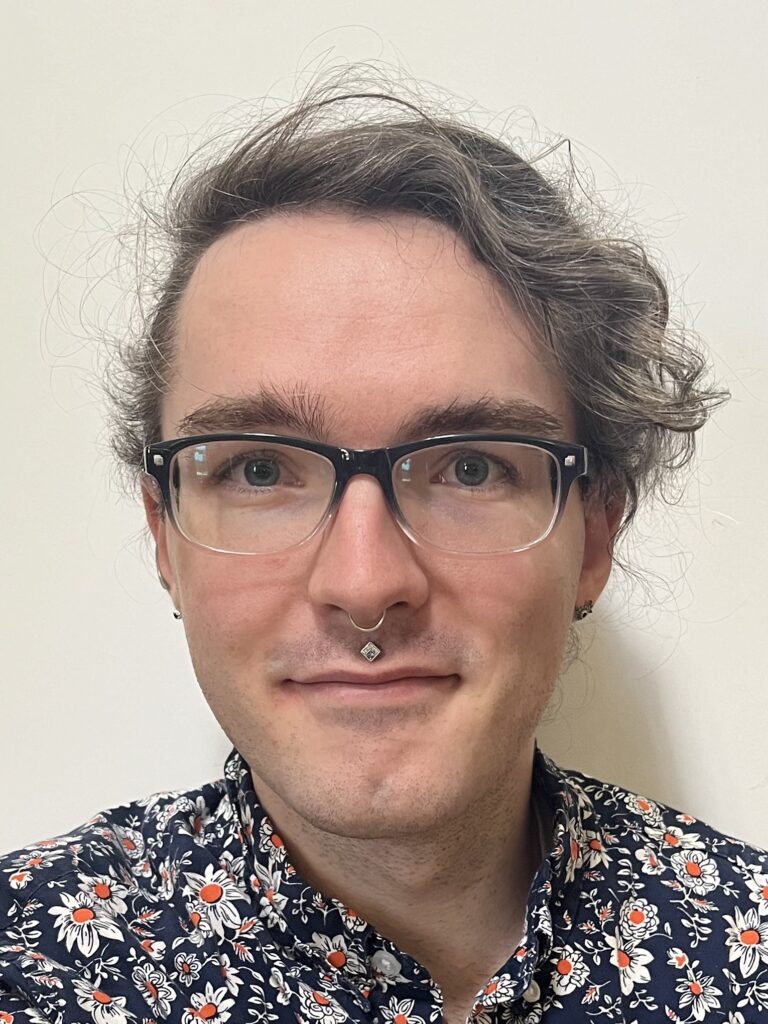
p-Adic Numbers
Ophelia Adams
University of Rochester
Friday, September 20th
4pm Rocky 310
In casual conversation, “numbers” usually mean the real numbers, which have a familiar
feel as the numbers of measurement. The mathematical constructions–first appearing
in the 19th century–that put them on a more rigorous foundation situate them in a
particular way, as completions, relative to the rational numbers. In this talk, we will
explore the p-adic numbers, a central object in modern number theory. These are a
similar-but-stranger kind of numbers which may also be constructed as a completion
of the rational numbers, but were not discovered until the early 20th century.
Curiously, centuries and millennia before the developments above, mathematicians (in
many dierent times, cultures, and places, for reasons both pure and applied) came
close to discovering the p-adic numbers. We will trace one of these imagined
developments to motivate and construct the p-adic numbers ourselves, study their
properties, and indicate how they, and the considerations which could have led to
their earlier discover, anticipate other modern developments in mathematics and
nearby fields.
Spring 2024 Schedule
| Date | Speaker | Affiliation |
|---|---|---|
| Tuesday, March 26th | Phanuel de Andrade Mariano | Union College |
| Tuesday, April 9th | Anna Pun | CUNY Baruch College |
| Friday, April 26th | Leo Goldmakher | Williams College |

Some Fascinating Characters in Number Theory
Leo Goldmakher
Williams College
Friday, April 26th
3pm Rocky 312
Are there infinitely many primes of the form n^2+1, where n is an integer? No one knows. In fact, there’s no example of any (single variable) polynomial of degree 2 or greater that’s been proved to output infinitely many primes. By contrast, the linear polynomial n+1 outputs infinitely many primes, a fact that’s been known for over 2000 years. Rather less trivially, Dirichlet proved in 1837 that any linear polynomial of the form an+b with a, b coprime must output infinitely many primes. To make his proof work, Dirichlet introduced certain nice functions called characters, which evolved (over the course of the next hundred years) into fundamental objects of study in algebra and number theory. I will discuss some of the history and mathematics of Dirichlet’s characters, including a very recent and simple characterization of them that seems to have been previously overlooked.
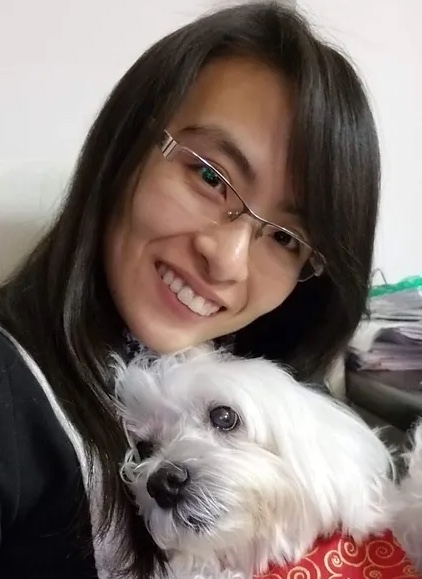
The Magic of Tableaux:
Exploring the Wonders of
Algebraic Combinatorics
Anna Pun
CUNY Baruch College
Tuesday, April 9th
3pm Rocky 312
Tableaux are one of the most fundamental and versatile objects in algebraic combinatorics, as they can encode and connect various concepts and structures in the field. In this talk, we will start with the definition and properties of Young tableaux, which are graphical representations of partitions of integers. We will then see how tableaux can be used in algebra: their connection to symmetric functions and partition algebras; how they can be related to various combinatorial operations, such as the RSK-algorithm and the Jeu-de-taquin procedure; and how they can give rise to various combinatorial structures, such as lattice paths, vacillating tableaux, and parking functions. We will also explore some variations of tableaux, such as composition tableaux and set-valued tableaux, and discuss some interesting problems and conjectures that arise from them. We will conclude with some open questions and directions for future research on tableaux and their applications in algebraic combinatorics.

The Hot Spots Problem
Phanuel de Andrade Mariano
Union College
Tuesday, March 26th
3pm Rocky 312
Consider a perfectly insulated 1-dimensional rod, or a 2-dimensional plate, or better yet, a 3-dimensional room. Perfectly insulated means that heat cannot escape this room. The Hot Spots Problem asks about what happens to the location of the “hot spots” and “cold spots” of this insulated body over a long period of time. To understand this problem we will introduce the equation that describes the evolution of heat over time. Moreover, we will discuss what is known (and not known) about this problem. We end the talk by discussing the connection between the Hot Spots Problem and Probability theory. In particular, this connection will be through a theory of random particles called Brownian motion.
Fall 2023 Schedule
| Date | Speaker | Affiliation |
|---|---|---|
| Tuesday, October 3rd | Colin Adams | Williams College |
| Wednesday, October 11th | Pablo Soberón | CUNY Baruch College |
| Thursday, October 26th | Joe Kraisler | Amherst College |
| Thursday, November 2nd | Karen Parshall | University of Virginia |
| Thursday, November 16th | Colby Kelln | Cornell University |
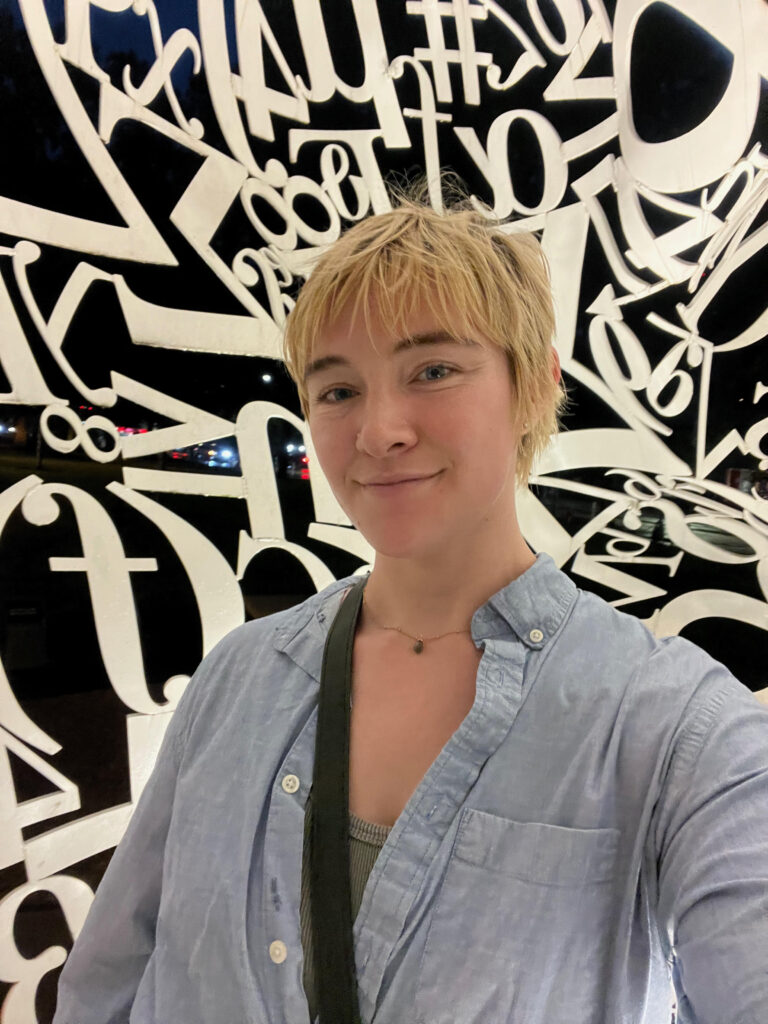
The Mathematics of Tilings
Colby Kelln
Cornell University
Thursday, November 16th
3pm Rocky 203
Imagine we are hired to tile an infinitely large bathroom floor. What tile shapes could we use? We will use math to explore and refine this question to make sure that our client is happy with our plans before we start laying grout.

Growing Research-Level Mathematics in 1930s America: An Historical Paradox
Karen Parshall
University of Virginia
Thursday, November 2nd
3pm Rocky 300
World War I had marked a break in business as usual within the American mathematical research community. In its aftermath, there was a stirring sense of entering into “a new era in the development of our science.” And then the stock market crashed. Would it be possible in such newly straitened times to sustain into the 1930s the momentum that American mathematicians had managed to build in the 1920s? This talk will explore the contours of an answer to that question.
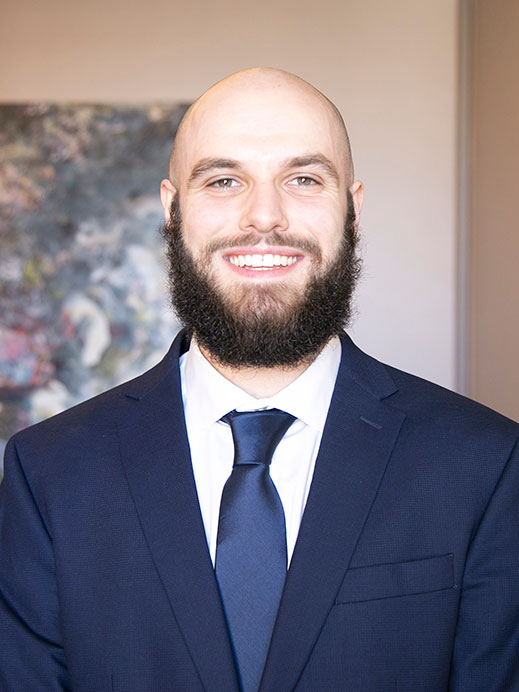
Topological Insulators
and the SSH Model
Joe Kraisler
Amherst College
Thursday, October 26th
3pm Rocky 300
Electronic band theory was one of the early 20th century achievements of quantum mechanics and placed solids into three categories: conductors, semiconductors, and insulators. However, starting in the 1980s with the discovery of the Quantum Hall Effect, a new phase of matter known as Topological Insulators (TIs) were theorized and eventually realized. These materials act as insulators in the interior, or bulk, while allowing electrons to freely move along the boundary, or edge, of the material. Additionally, there is a relationship between the a) number of states which exist on the boundary and b) a property of the interior which is protected under small defects. This relationship is often referred to as the Bulk-Edge Correspondence.
We will study the simplest example of a 1 dimensional topological insulator, the SSH (Su-Schrieffer-Heeger) model of polyacetylene, and prove the bulk edge correspondence for this particular system. No previous physics knowledge is required.

Art Galleries, Voting Theory, and Convex Sets
Pablo Soberón
CUNY Baruch College
Wednesday, October 11th
3pm Rocky 310
The study of intersection patterns of convex sets is a central topic in combinatorial geometry. In this talk, we will discuss the applications of this area to two different topics: art galleries and voting theory.
In art gallery problems we seek conditions on the blueprint of an art gallery that guarantee that few guards can keep every painting safe. In voting theory, given a group of people such that every person has an interval of tolerance in different topics, we seek conditions that guarantee that all such intervals overlap. We focus on connections of these two topics with quantitative Helly theorems, which characterize finite families of convex sets whose intersection is not only non-empty, but quantifiably large.
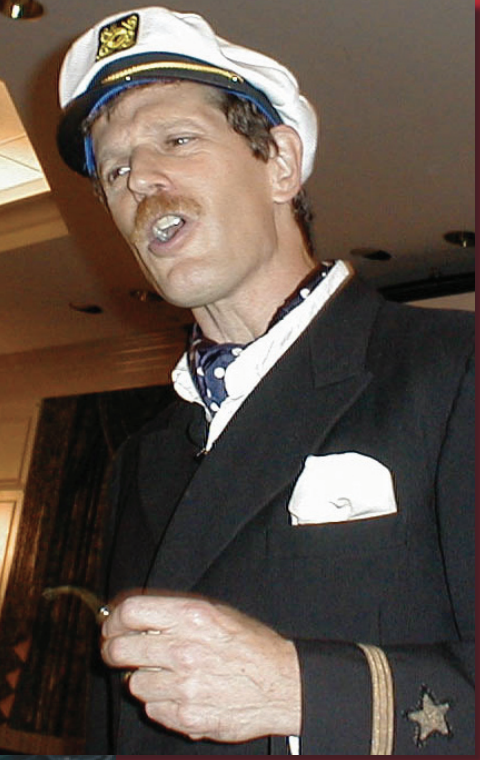
Blown Away:
What Knot to do When Sailing
Colin Adams
Williams College
Tuesday, October 3rd
4pm Rocky 203
Being a tale of adventure on the high seas involving great risk to the tale teller, and how an understanding of the mathematical theory of knots saved his bacon. No nautical or mathematical background assumed!
